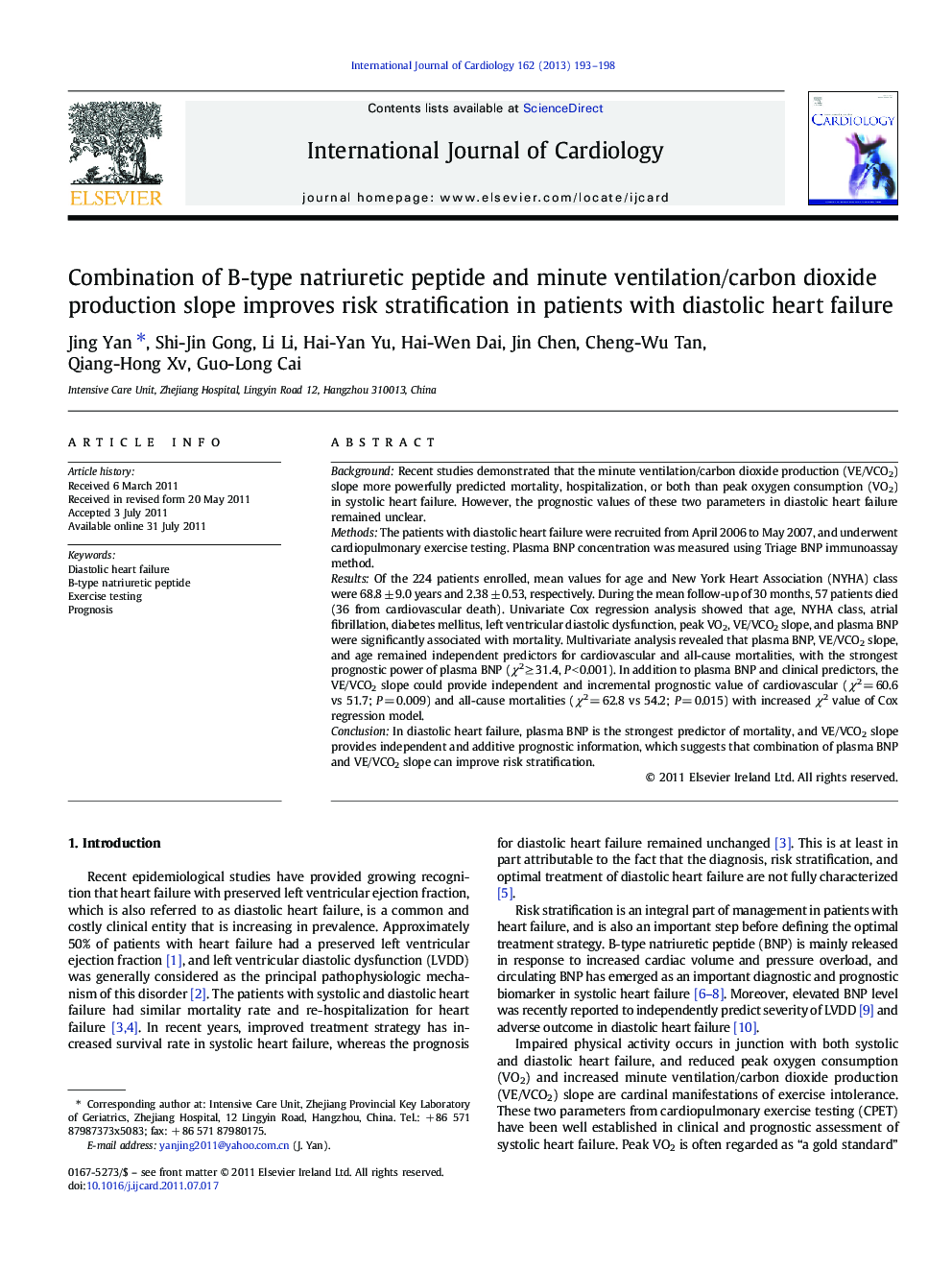| Article ID | Journal | Published Year | Pages | File Type |
|---|---|---|---|---|
| 2929811 | International Journal of Cardiology | 2013 | 6 Pages |
BackgroundRecent studies demonstrated that the minute ventilation/carbon dioxide production (VE/VCO2) slope more powerfully predicted mortality, hospitalization, or both than peak oxygen consumption (VO2) in systolic heart failure. However, the prognostic values of these two parameters in diastolic heart failure remained unclear.MethodsThe patients with diastolic heart failure were recruited from April 2006 to May 2007, and underwent cardiopulmonary exercise testing. Plasma BNP concentration was measured using Triage BNP immunoassay method.ResultsOf the 224 patients enrolled, mean values for age and New York Heart Association (NYHA) class were 68.8 ± 9.0 years and 2.38 ± 0.53, respectively. During the mean follow-up of 30 months, 57 patients died (36 from cardiovascular death). Univariate Cox regression analysis showed that age, NYHA class, atrial fibrillation, diabetes mellitus, left ventricular diastolic dysfunction, peak VO2, VE/VCO2 slope, and plasma BNP were significantly associated with mortality. Multivariate analysis revealed that plasma BNP, VE/VCO2 slope, and age remained independent predictors for cardiovascular and all-cause mortalities, with the strongest prognostic power of plasma BNP (χ2 ≥ 31.4, P < 0.001). In addition to plasma BNP and clinical predictors, the VE/VCO2 slope could provide independent and incremental prognostic value of cardiovascular (χ2 = 60.6 vs 51.7; P = 0.009) and all-cause mortalities (χ2 = 62.8 vs 54.2; P = 0.015) with increased χ2 value of Cox regression model.ConclusionIn diastolic heart failure, plasma BNP is the strongest predictor of mortality, and VE/VCO2 slope provides independent and additive prognostic information, which suggests that combination of plasma BNP and VE/VCO2 slope can improve risk stratification.
